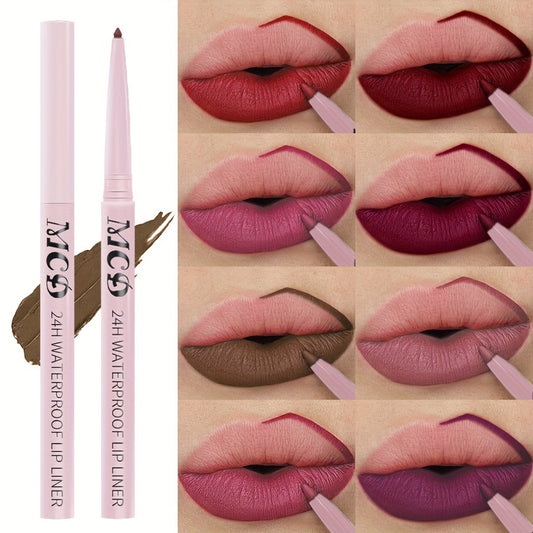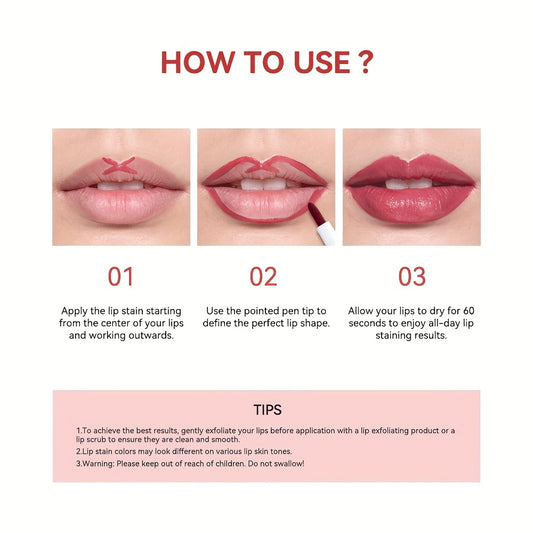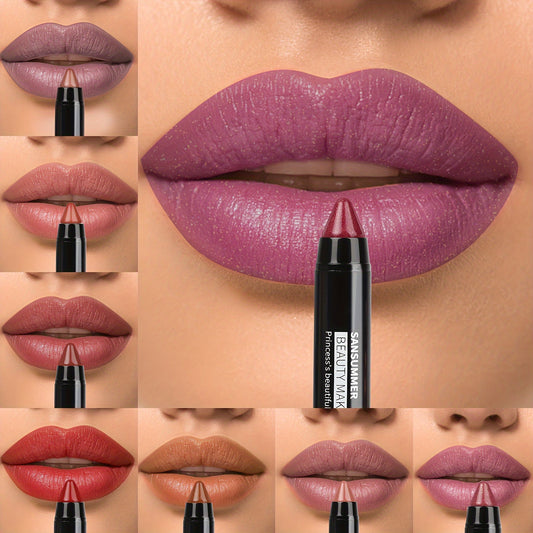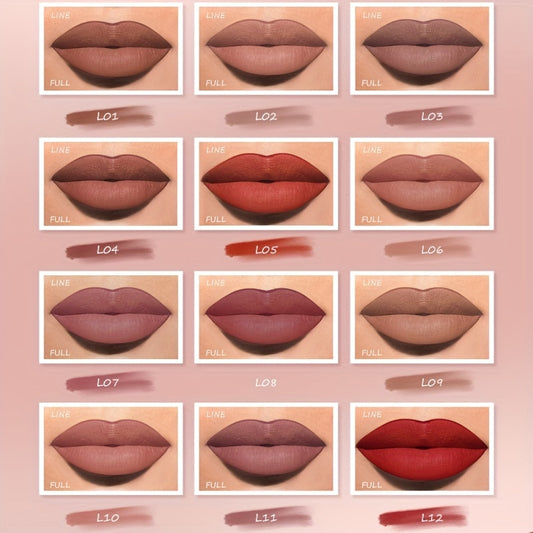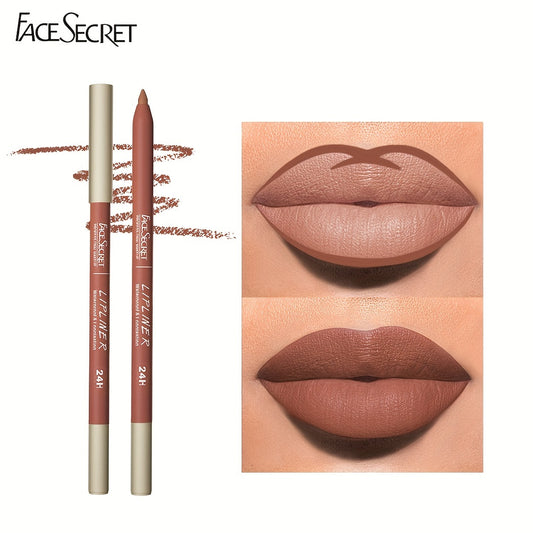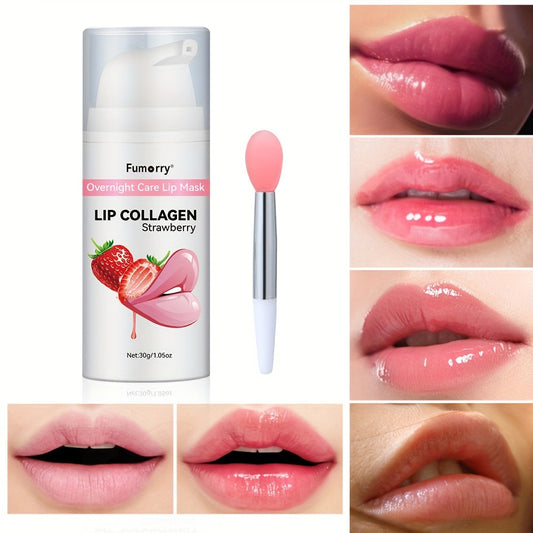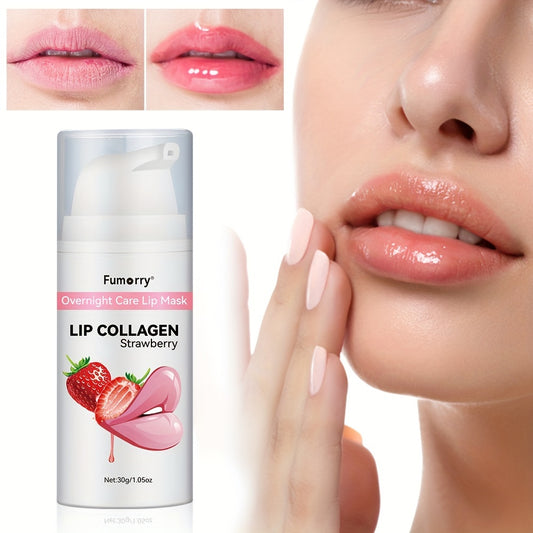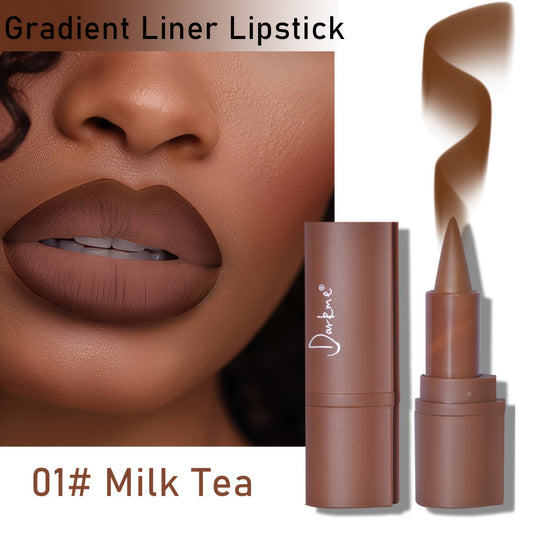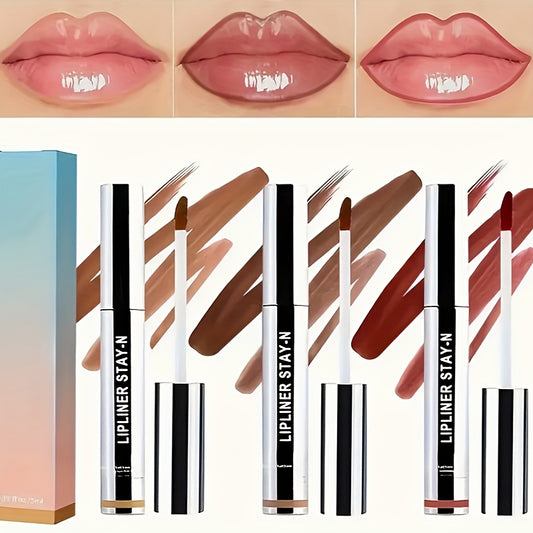Crafting the Perfect Recipe of Lip Balm at Home
Share
Making your own lip balm at home is actually pretty simple, and it's a great way to know exactly what you're putting on your lips. Plus, it can save you some money! This guide will walk you through everything you need to know to create your very own custom recipe of lip balm, from picking out ingredients to troubleshooting common issues. It's a fun little project, and you'll end up with a product that's perfect for you.
Key Takeaways
- The basic recipe of lip balm usually involves a mix of oils, waxes, and butters.
- You can change the feel of your lip balm by adjusting the amounts of wax and oil.
- Natural ingredients like carrier oils and essential oils are good choices for your lip balm recipe.
- Making your own lip balm lets you pick flavors and colors you really like.
- Properly storing your homemade lip balm helps it last longer.
Understanding the Core Recipe of Lip Balm
The Basic Formula for Your Lip Balm Recipe
Okay, so you want to make lip balm. Awesome! The basic idea is to mix oils, waxes, and butters in the right amounts. It's not rocket science, but getting the ratios right is important. Think of it like this:
- Oils: These make the lip balm smooth and moisturizing.
- Waxes: These give the lip balm structure and keep it solid.
- Butters: These add extra creaminess and skin-loving benefits.
The general rule of thumb is to start with a 3:1 ratio of oil to wax. You can then add butter to the mix, usually in a 1:1 ratio with the wax. This is just a starting point, though. Feel free to experiment!
Adjusting Consistency in Your Lip Balm Recipe
So, you've made your first batch, but it's not quite right? No biggie! Adjusting the consistency is pretty easy. If your lip balm is too soft, it'll melt too easily and won't last long. If it's too hard, it'll be difficult to apply and might feel waxy. Here's how to fix it:
- Too Soft: Add more wax. A little bit goes a long way, so add it in small increments.
- Too Hard: Add more oil. This will soften the mixture and make it easier to apply.
- Still Not Right?: Consider adding a bit of butter for a smoother feel.
Essential Ingredients for a Natural Lip Balm Recipe
When it comes to natural lip balm, the ingredients you choose really matter. You want stuff that's good for your lips and free from harsh chemicals. Here are some must-haves:
- Carrier Oils: Coconut oil, olive oil, sweet almond oil – these are your base. They moisturize and carry other ingredients.
- Waxes: Beeswax is the classic choice, but you can also use candelilla wax for a vegan option. These provide structure.
- Butters: Shea butter, cocoa butter, mango butter – these add extra moisture and a luxurious feel.
- Essential Oils: Peppermint, lavender, tea tree – these add flavor and therapeutic benefits (use sparingly!).
| Ingredient | Benefit |
|---|---|
| Coconut Oil | Moisturizing, adds a smooth texture |
| Beeswax | Provides structure, locks in moisture |
| Shea Butter | Deeply moisturizing, soothes dry lips |
| Peppermint Oil | Adds a refreshing tingle, soothes skin |
Gathering Your Lip Balm Recipe Ingredients

Okay, so you're ready to make some lip balm! Awesome. But before you jump in, you gotta get all your stuff together. It's like baking a cake – you can't just think about the ingredients; you actually need them. Let's break down what you'll need.
Selecting Carrier Oils for Your Lip Balm Recipe
Carrier oils are the base of your lip balm. They provide moisture and help the other ingredients glide on smoothly. Think of them as the foundation of your lip-care masterpiece. There are tons of options, each with its own benefits. Here are a few popular choices:
- Sweet Almond Oil: A classic choice, it's light, absorbs well, and is good for sensitive skin.
- Coconut Oil: Adds a nice, subtle scent and is very moisturizing. Be careful, though – too much can make your lip balm feel greasy.
- Jojoba Oil: Actually a liquid wax, it's very similar to the skin's natural sebum, making it super moisturizing and non-greasy.
- Avocado Oil: Rich in vitamins and great for dry, chapped lips.
Choosing Waxes for Your Lip Balm Recipe
Waxes are what give your lip balm its structure and help it stay solid. Beeswax is the most common choice, but there are vegan options too. Here's the lowdown:
- Beeswax: The traditional choice. It creates a firm but pliable balm and has a slight honey scent. Plus, it's a natural emollient.
- Candelilla Wax: A plant-based wax that's a great vegan alternative to beeswax. It's a bit harder than beeswax, so you might need to adjust your recipe.
- Carnauba Wax: Another plant-based option, but it's very hard. Usually used in combination with other waxes to add shine and hardness.
Incorporating Butters into Your Lip Balm Recipe
Butters add extra moisturizing power and a luxurious feel to your lip balm. They're not strictly necessary, but they can really take your recipe to the next level. Here are some favorites:
- Shea Butter: Super moisturizing and helps to heal dry, cracked lips. It can sometimes be a little grainy, so make sure to melt it completely.
- Cocoa Butter: Smells amazing (like chocolate!) and adds a nice, firm texture to your balm. It's also very moisturizing.
- Mango Butter: Similar to shea butter but less likely to be grainy. It's also very moisturizing and has a light, fruity scent.
Adding Essential Oils to Your Lip Balm Recipe
Essential oils add flavor and scent to your lip balm, and some have therapeutic benefits too. But be careful – some essential oils can be irritating to the skin, so always use them in small amounts. Here are some popular choices:
- Peppermint Oil: Cooling and refreshing, but can be irritating if you use too much.
- Lavender Oil: Calming and soothing, great for irritated lips.
- Sweet Orange Oil: Uplifting and smells delicious.
- Tea Tree Oil: Has antiseptic properties and can help to heal minor cuts and scrapes.
When using essential oils, always start with a very small amount (like 1-2 drops per tablespoon of base ingredients) and adjust to your liking. It's always better to add more than to add too much and have to start over.
Also, make sure you have all the tools you need: a double boiler (or a heat-safe bowl and saucepan), measuring spoons, stirring utensils, and containers to pour your finished lip balm into. Getting everything ready beforehand will make the whole process much smoother.
Step-by-Step Guide to Crafting Your Lip Balm Recipe
Preparing Your Workspace for the Lip Balm Recipe
Okay, before you even think about melting beeswax, let's talk workspace. A clean and organized area is key to a smooth lip balm-making experience. Trust me, you don't want stray glitter or rogue coffee grounds ending up in your precious balm.
Here's a quick checklist:
- Clear your counter space.
- Gather all your ingredients and tools (double boiler, measuring spoons, containers, etc.).
- Lay down some parchment paper or a silicone mat for easy cleanup. Spilled oils happen!
I cannot stress enough how important it is to have everything within reach. There's nothing worse than realizing you're out of vitamin E oil halfway through the process. It's like when you're baking and discover you're out of eggs. Disaster!
Melting Ingredients for Your Lip Balm Recipe
Time to melt! The double boiler method is your best friend here. It's gentle and prevents scorching, which is crucial for maintaining the quality of your ingredients. If you don't have a fancy double boiler, don't sweat it. A heat-safe bowl set over a pot of simmering water works just as well. Just make sure the bowl isn't touching the water.
- Combine your waxes, butters, and oils in the top of the double boiler.
- Heat over medium-low heat, stirring occasionally, until everything is completely melted and smooth. Be patient; it might take a few minutes.
- Once melted, remove from heat immediately.
Mixing and Pouring Your Lip Balm Recipe
Alright, the finish line is in sight! This is where you add your essential oils and any other fun extras. Work quickly, as the mixture will start to cool and solidify.
- Add your essential oils or flavorings to the melted mixture. Start with a few drops and adjust to your liking. Remember, a little goes a long way!
- Stir gently but thoroughly to ensure everything is evenly distributed.
- Carefully pour the mixture into your lip balm tubes or containers. A small funnel can be helpful here to avoid spills.
- Let the lip balms cool completely at room temperature. This usually takes about 30-60 minutes. Don't put them in the fridge or freezer; it can cause them to crack.
Once they're solid, cap 'em and you're done! High five!
Customizing Your Lip Balm Recipe
Once you've nailed the basic lip balm recipe, the real fun begins: customization! This is where you get to play mad scientist and create something truly unique. Think beyond just basic hydration; consider what other benefits you want your lip balm to provide. Do you want a specific flavor? A hint of color? Maybe some extra soothing properties? Let's explore the possibilities.
Flavoring Your Lip Balm Recipe Naturally
Forget artificial flavors! Nature offers a bounty of delicious and safe options for flavoring your lip balm. Essential oils are a great place to start, but remember that some can be irritating to the lips, so use them sparingly (we're talking drops, not teaspoons!). Peppermint, sweet orange, and vanilla are popular choices. You can also infuse your carrier oils with herbs like vanilla bean or dried rose petals for a more subtle flavor. Just be sure to strain out any solids before using the oil in your recipe.
Adding Color to Your Lip Balm Recipe
Want to add a touch of color to your lip balm? There are several natural ways to do it.
- Mica powders: These are mineral-based pigments that come in a wide range of colors and add a subtle shimmer.
- Beetroot powder: A tiny pinch will give your lip balm a lovely pink tint.
- Cocoa powder: For a chocolatey brown hue, cocoa powder is your friend. Just be aware that it can also add a slight chocolate flavor.
Always start with a very small amount of color and add more until you reach your desired shade. Remember, a little goes a long way!
Enhancing Your Lip Balm Recipe with Botanicals
Botanicals can take your lip balm to the next level by adding extra moisturizing, soothing, or healing properties.
- Calendula: Known for its anti-inflammatory and wound-healing properties, calendula-infused oil is a great addition to lip balms for chapped lips.
- Chamomile: Chamomile is soothing and calming, making it ideal for sensitive lips.
- Rose petals: Rose petals add a touch of luxury and can help to hydrate and soften the lips.
Experimenting with different botanicals is a great way to create a lip balm that's perfectly tailored to your needs. Just be sure to research any potential allergies or sensitivities before adding a new ingredient to your recipe. It's also a good idea to start with small batches when trying out new combinations, so you don't waste a lot of ingredients if you don't like the result.
Storing and Packaging Your Lip Balm Recipe Creations
Once you've crafted your perfect lip balm, the next step is figuring out how to store it properly and package it attractively. This not only keeps your lip balm fresh but also makes it giftable if you're feeling generous!
Choosing the Right Containers for Your Lip Balm Recipe
Selecting the right container is important. The most common options are tubes, tins, and small jars. Tubes are convenient for application, tins offer a classic look, and jars allow for easy access with a finger. Consider the following:
- Tubes: Great for portability and direct application. Look for twist-up tubes that are easy to fill.
- Tins: Offer a vintage feel and are good for thicker balms. Make sure they're airtight.
- Jars: Best for balms you don't mind applying with your finger. Choose small sizes to prevent contamination.
Also, think about the material. Plastic is lightweight and inexpensive, while glass offers a more premium feel and is better for the environment. Make sure whatever you choose is clean and sanitized before filling!
Labeling Your Homemade Lip Balm Recipe
Labels are important for several reasons. First, they let people know what's in the lip balm. Second, they can add a personal touch if you're giving it as a gift. Here are some things to include on your label:
- Ingredients: List all ingredients used in the lip balm.
- Scent/Flavor: Clearly state the flavor or scent.
- Date Made: This helps track freshness.
- Your Brand/Name: If you're selling or gifting, add your name or brand.
You can use pre-printed labels or create your own using a computer and printer. For a rustic look, consider hand-written labels on kraft paper.
Proper Storage for Your Lip Balm Recipe
How you store your lip balm affects its shelf life and quality. Here are some tips:
- Keep it cool: Store lip balm in a cool, dark place away from direct sunlight and heat. Heat can melt the balm and change its consistency.
- Avoid extreme temperatures: Don't leave lip balm in your car on a hot day or in a freezing environment. These temperature swings can ruin the balm.
- Use within a reasonable timeframe: Homemade lip balm typically lasts for 6-12 months. After that, the oils can go rancid. Labeling with the date made helps you keep track.
Proper storage is key to extending the life of your homemade lip balm. By keeping it in a cool, dark place and using it within a year, you can ensure that it remains effective and enjoyable to use. Don't forget to check for any changes in smell or texture, which can indicate that it's time to make a fresh batch.
Troubleshooting Common Lip Balm Recipe Issues
Making lip balm at home is usually pretty straightforward, but sometimes things don't go exactly as planned. Don't worry, most issues are easy to fix! Here's how to troubleshoot some common problems you might encounter.
Addressing a Lip Balm Recipe That's Too Soft
If your lip balm is too soft, it's usually because there isn't enough wax in the recipe. This can happen if you didn't measure correctly, or if the weather is really warm.
Here's what you can do:
- Remelt the lip balm: Gently reheat the mixture until it's completely liquid again.
- Add more wax: Start with a small amount, like 1/4 teaspoon of beeswax (or carnauba wax for a vegan option) per ounce of lip balm. Melt it in completely.
- Test the consistency: Let a small amount cool on a spoon. If it's still too soft, repeat the process with a bit more wax.
- Consider the oils: Too much liquid oil can also make the balm soft. If you've already added a lot of wax, you might need to add a bit more butter to balance it out.
Fixing a Lip Balm Recipe That's Too Hard
On the flip side, a lip balm that's too hard can be uncomfortable to use. This usually means there's too much wax in the recipe.
Here's how to soften it up:
- Remelt the lip balm: Just like before, gently reheat the mixture until it's liquid.
- Add more oil: Start with a small amount of your chosen carrier oil (like coconut oil or sweet almond oil), about 1/4 teaspoon per ounce of lip balm.
- Test the consistency: Let a small amount cool to see if it's improved. Repeat if needed.
- Consider the butters: Adding a bit more butter (like shea or cocoa butter) can also help soften the balm and make it more emollient.
Preventing Graininess in Your Lip Balm Recipe
Sometimes, lip balm can develop a grainy texture. This is often due to the butters, especially shea butter, crystallizing. It's not harmful, but it doesn't feel great on your lips.
Here's how to prevent it:
- Heat the shea butter properly: If using shea butter, heat it to 175°F (80°C) and hold it at that temperature for about 20 minutes before adding it to the other ingredients. This helps stabilize the butter.
- Cool quickly: After pouring the lip balm into containers, put them in the refrigerator to cool quickly. This can help prevent crystals from forming.
- Avoid temperature fluctuations: Don't store your lip balm in places where the temperature changes a lot, like your car. Consistent temperatures are best.
It's worth noting that even with these precautions, some butters are just more prone to graininess than others. If you consistently have this problem, you might want to try a different butter or adjust the ratio in your recipe.
Wrapping Things Up
So, there you have it! Making your own lip balm at home is pretty simple, right? It's not just about saving a few bucks, though that's nice too. It's really cool to know exactly what's going on your lips, especially when you can pick out all-natural stuff. Plus, playing around with different oils and butters to find your perfect mix? That's just plain fun. You get to be creative and end up with something that's totally yours. So go ahead, give it a shot. Your lips will thank you, and you'll probably feel pretty good about making something awesome with your own hands.
Frequently Asked Questions
How hard is it to make lip balm at home?
Making your own lip balm is super easy! You just need a few basic things like oils, waxes, and butters. You melt them all together, add some fun scents if you want, and then pour the mix into little containers. It's like a simple science experiment!
What ingredients do I need for homemade lip balm?
The main things you'll need are a carrier oil (like coconut or almond oil), a wax (like beeswax or candelilla wax), and a butter (like shea or cocoa butter). You can also add essential oils for smell or flavor, and even some natural color.
My lip balm is too hard/soft. How can I fix it?
You can make your lip balm softer by adding a little more liquid oil. If it's too hard, you can melt it down again and stir in a bit more of your chosen oil. Just add a tiny bit at a time until it feels right.
How do I add flavor or scent to my lip balm?
To make your lip balm smell and taste good, you can use natural essential oils like peppermint, orange, or vanilla. Just a few drops are usually enough. Always make sure the essential oils you use are safe for lips!
Can I make lip balm without beeswax?
Yes, you can definitely make lip balm without beeswax! There are plant-based waxes like candelilla wax or carnauba wax that work just as well. They help give your lip balm its solid shape.
What's the best way to store my homemade lip balm?
The best way to store your homemade lip balm is in small, airtight containers, like lip balm tubes or tiny tins. Keep them in a cool, dry place away from direct sunlight. This will help them last longer and keep their good quality.


